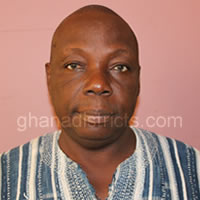Introduction
A district’s population size and age-sex composition have broad ranging consequences for a number of socio-economic indicators such as the welfare of the people. An understanding of the age and sex structure of a population yields insights into changing population structure and highlights social and economic challenges. All levels of government need information on age and sex composition of the population in planning and development and in provision of services. This chapter therefore provides information on the age and sex structure of the population of the municipality, locality of residence, dependency ratios, and fertility, mortality and migration patterns. The chapter also looks at the population size, age-sex structure, locality of residence, dependency ratios, and fertility, mortality and migration patterns.
Population Size and Distribution
Table 2.1 presents the distribution of the Municipality’s population by age, sex and locality of residence. The Sunyani Municipality has a total population of 123,224 made up of 61,610 males and 61,614 females. The Municipality is predominantly urban with more than eight out of every 10 persons living in urban areas.
As shown in Table 2.1, there are about the same proportions of males and females in the Municipality. More males are however recorded for the population below 10 years as the sex ratios of 106.6 and 108.8 depict for age groups (0-4) and (5-9) respectively. Similarly more males are recorded for the age groups 20-24 (107.7) and 25-29 (101.5). This may be due to the location of some tertiary institution in and around the municipality. More females are however recorded in the 30 – 49 age groups, 65-69 and age groups above 749 females are observed.
Dependency ratio explains the relative predominance of populations in dependent ages, (Persons under 15 years and 65 years and older).The Sunyani Municipal has a total dependency ratio of 54.0 this means that, two people in the working population in the Municipality has one person in the dependent group to support. The dependency ratio in the rural areas is 75.9 which means every 100 persons in the working population, have about 76 persons in the dependent group to support. However, in the urban areas, one person in the dependent group is supported by two persons in the working population.
Age-Sex Structure
Figure 2.1 presents the population pyramid of the age and sex structure for the Sunyani Municipality. The age structure indicates an almost equal proportions of the population between ages 5 and 19, especially for the male population. As indicated earlier, the size of the population in age 20-24 for both males and females may be a reflection of the tertiary student populations in the Municipality. However, the population for both male and female decreases as the ages increases from (30-69). Not much difference is observed for the male and female population after age 75.
Fertility, Mortality and Migration
Fertility
Fertility refers to the frequency of childbearing among a population. The total fertility rate (TFR) which is widely used is the average number of live births per 1,000 women (15-49) years exposed throughout their child bearing years given that the prevailing age specific rate remain. General Fertility Rate (GFR) is the number of births in a given year divided by the mid- year population of women in the age groups 15-49.Crude Birth Rate(CBR) on the other hand is the birth per 1000 population per year.
Table 2.2 presents information on the Total Fertility Rate (TFR) for women aged 15-49 years in Sunyani Municipality. The Total Fertility Rate (TFR) for the reproductive age group (15-49 years) in Sunyani Municipality is 2.61 per woman compared to the regional average of three to four births (3.58) per woman. The Municipality’s GFR of 73.1 (number of births per 1000 women in the 15-49 age groups) and CBR of 21.5 are also lower than the regional average of 105.9 and 26.3 respectively (Table2.2).
Children ever born and surviving
The number of children ever born per woman measures the lifetime or cumulative fertility performance of female in the reproductive age group 15-49 years.
Table 2.3 gives a summary of the female population 12 years and older by age, children ever born, and children surviving by their sexes in the Sunyani Municipality.
The table shows a record of 83,765 children ever born with 74,655 children surviving for the female population 12 years and older in the district. Overall, there are more males ever born (42,010) then females (41, 7550) for all ages in the district.
In terms of children ever born in the age groups, females in the age group 60+ recorded the highest children ever born 18,116. The age group with the highest proportion of surviving children (92.7%) is 30-34 and the age group 12-14 has the least proportion of surviving children (64.3%).
Mortality, as one of the three components of population change, plays an important role in determining the growth of a population. Mortality is the occurrence of death in a population. The level and pattern of mortality is a reflection of the health status of a population. Crude Death Rate (CDR) is the number of death in a year per 1,000 mid-year population of a given year. Table 2.4 presents the total number of deaths recorded in households and the CDR in the Municipality. A total of 455 deaths were recorded in the 12 months preceding the Census Night, yielding a CDR of 3.7 deaths in every 1,000 population. This shows that the mortality experience in the Municipality is lower than that of the region generally.
Reported age specific death rate
Death rates are calculated for specific age groups in order to compare mortality at different ages or at the same age over time. The reported age specific death rate (ASDR) is defined as the number of deaths in a specified age group.
Figure 2.2 shows the age specific death rates by the male and female populations in the Municipality. Almost the same level of mortality is observed in the population below age 20, though males appear to have a slightly higher rate than their female counterparts. Thereafter, female mortality appears to be higher till after age 35.
Mortality picks up momentum after age 29 and remains relatively stable for males from age 40 through 60 years. Sharp increases in the mortality figures are observed for males from age 60 whereas females experience the sharp increase from age 65.
Cause of death
Table 2.5 provides information on deaths which occurred in households in the last 12 months preceding the Census Night. The data show that about eight percent (7.9%) of the total death recorded in the municipal is due to accidents, or violence, or homicide or suicide while 92.1 percent are due to all other causes. This figure is slightly lower than the regional average of (8.7%) However, 92.1 percent of deaths which occurred by all other causes is higher than the regional average of 91.3 percent.
Migration
A migrant is a person whose current place of residence is different from his or her place of birth or previous place of residence. There are two types of migration, namely internal and external. Internal migration is the movement of people between geographical boundaries within national borders whiles external migration is the movement of people across geographical boundaries outside national borders.
Internal migration can be analyzed in terms of intra and inter-region. Intra-regional migration refers to population movement between localities within an administrative region, while inter-regional migration is the movement of people between different administrative regions of the country. For the 2010 PHC; migration of the population is measured by combining data on the place of birth with place of enumeration and duration of stay at place of enumeration. The birthplace of a person refers to the locality of usual residence of the mother at the time of birth.
Table 2.6 presents data on the place of birth of the population by duration of residence of migrants. More than half (64,693) of the persons residing in the municipality are migrants. About 28,562 are persons residing elsewhere in the Region. Ashanti region recorded majority of person amongst the other regions who were enumerated in the municipality but born elsewhere in another region. A total number of 1,429 were persons enumerated but born outside the country, out of this number majority (34.1%) have lived in the municipal between 1-4 years.
For migrants who have lived in the district for less than one year, western region recorded the highest with 34.6 percent, followed by Ashanti with 31.5 percent. The rest of the regions recorded between 20.2 percent and 26.0 percent including those born outside Ghana. Less than 20 percent was recorded for all the regions including those born outside Ghana for persons who have lived in the municipal between 10-19 years.
In the case of migrants who have lived in the municipal 20 years and more, Western region recorded the least with only 5.7 percent, Central region recorded the highest (21.3%) whiles the rest including those born outside Ghana ranged between 12.0 and 18.1 percent.
Spatial Analysis
HIERARCHY OF SETTLEMENTS
The hierarchy of settlements in the municipality are categorised into three levels. This is done based on the percentage of total weighted index of 570.
Date Created : 11/20/2017 3:23:31 AM





 facebook
facebook X (twitter)
X (twitter) Youtube
Youtube +233 593 831 280
+233 593 831 280 0800 430 430
0800 430 430 GPS: GE-231-4383
GPS: GE-231-4383 info@ghanadistricts.com
info@ghanadistricts.com Box GP1044, Accra, Ghana
Box GP1044, Accra, Ghana